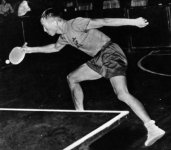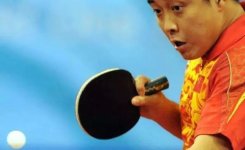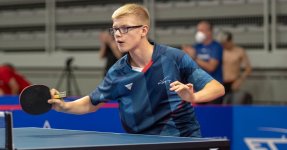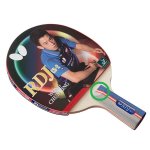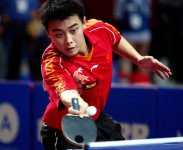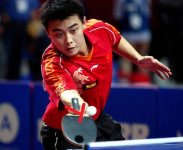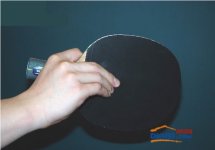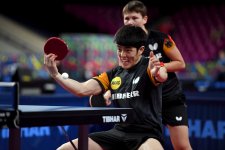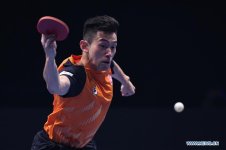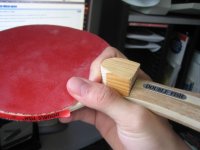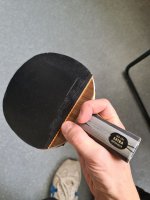Modern penhold grip:
View attachment 26670 View attachment 26683
Majority of modern penholders who emphasize on backhand speed, wrist flexibility and power usually have a swallower / looser grip as compared to traditional penholders. The most studied modern penhold grip (Wang Hao), has his index finger resting on the slope of the handle.
View attachment 26673
The thumb is almost crossing the index at an angle as compared to pointing straight
View attachment 26674 View attachment 26675
Wang Hao's backhand, rest the middle and ring fingers on the middle of the paddle and extending them not straight up but rather straight
View attachment 26671
Other successful modern penholders like Wong Chun Ting, Felix and Dang Qiu all have different grip on the backhand side
Dang and Felix curly fingers but resting the two fingers more on the middle
View attachment 26677 View attachment 26678
Wong's more on the bottom of the racket
View attachment 26679
I am pretty sure Wang Hao used a C-pen paddle with a modified J-pen handle to practice RPB when he was young, that allowed his index to rest comfortably and uses it as a leverage for more power. Dang Qiu was a J-pen player with RPB then turned C-pen, it seems like having a J-pen handle is a good place to start if you indeed want to learn the RPB technique seriously.
View attachment 26682
Most modern penholders including Xu Fei (Chinese National Team, who emulated Wang Hao's technique and learning from the master of RPB) all lack power on their forehand stroke because of this type of modern grip.
The beauty of PH grip is there isn't a single formula for all, it comes down to your hand size, finger length, forehand or backhand oriented, comfortability, habit and really just perfecting your own form.






